People sqeeze past the new internationally funded market hall
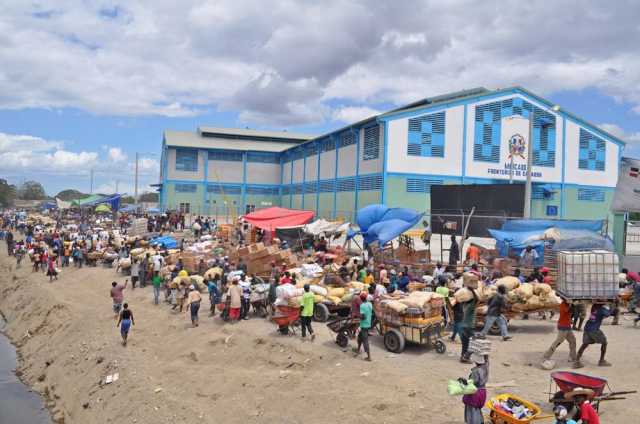
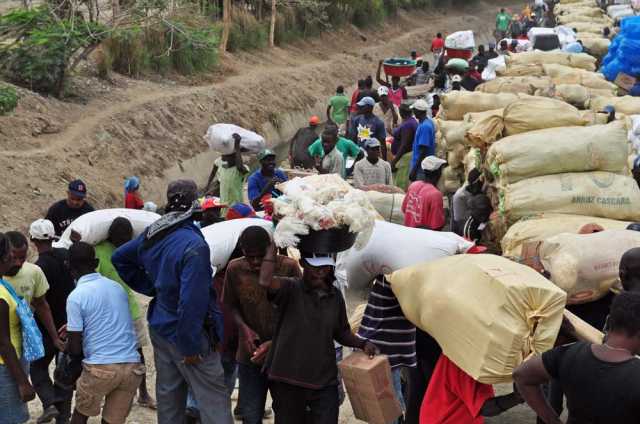
returning with goods from the informal market at the back of the building
Until the cholera scare of 2010 the ‘international fair’ in Dajabón occupied the streets of the town spreading across nine blocks of the centre
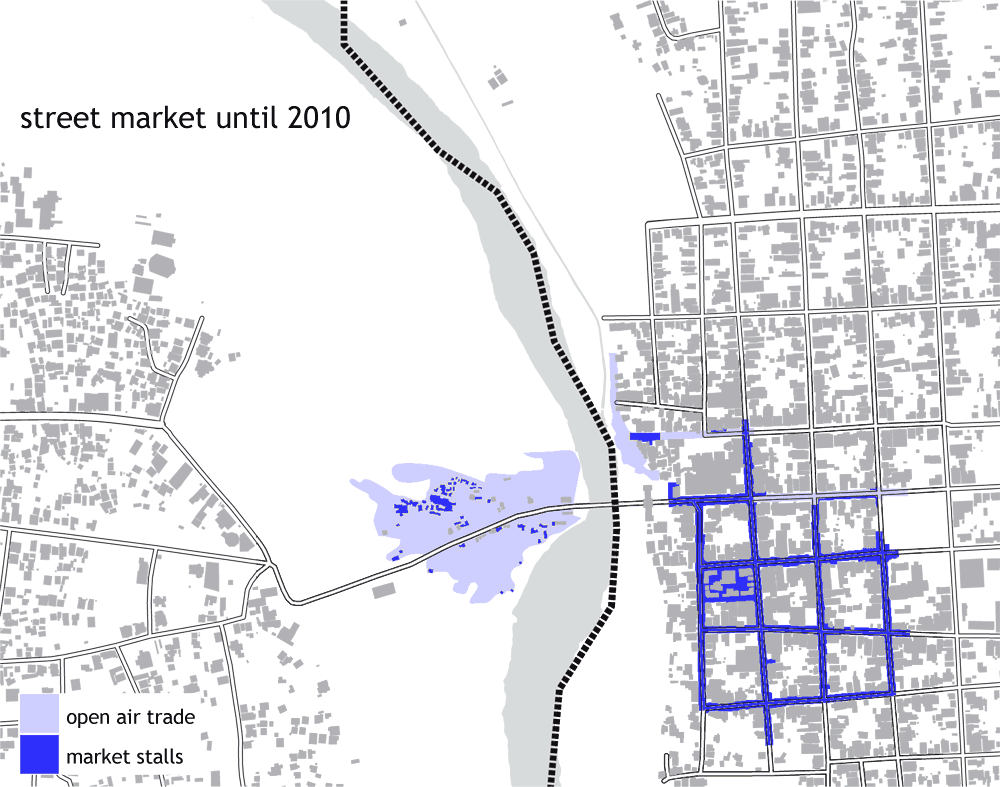
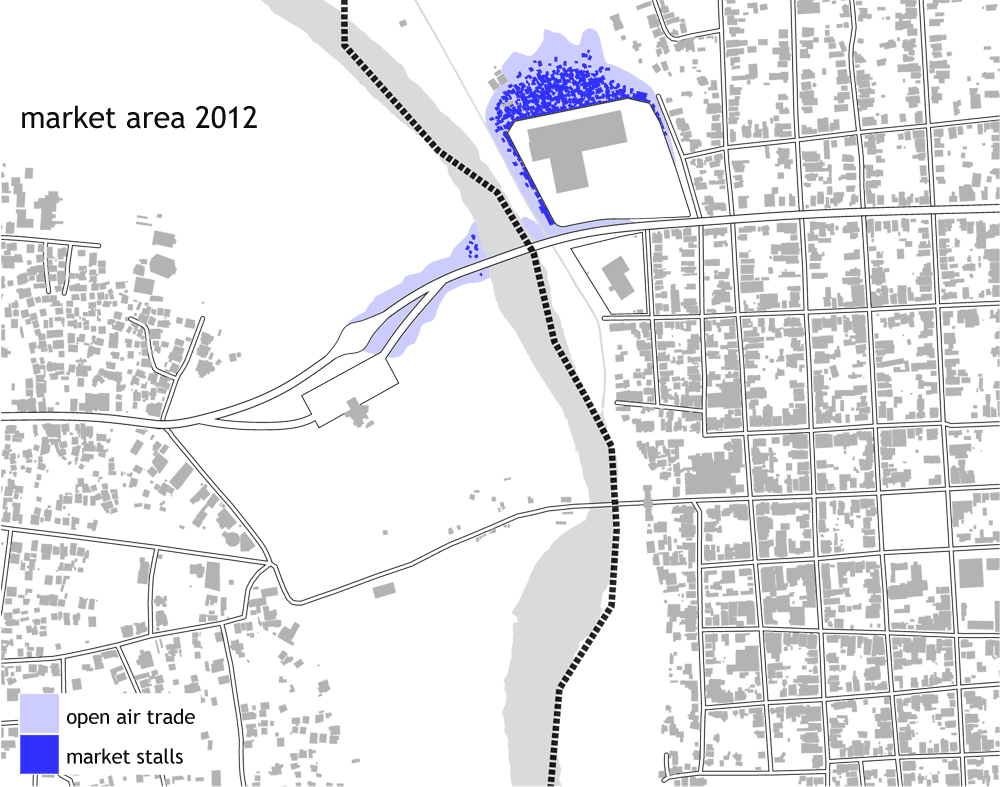
The market has now been moved to the new border crossing with vendors initially setting up stall on the fields at the back of the new market hall
Market at the back of the new market hall
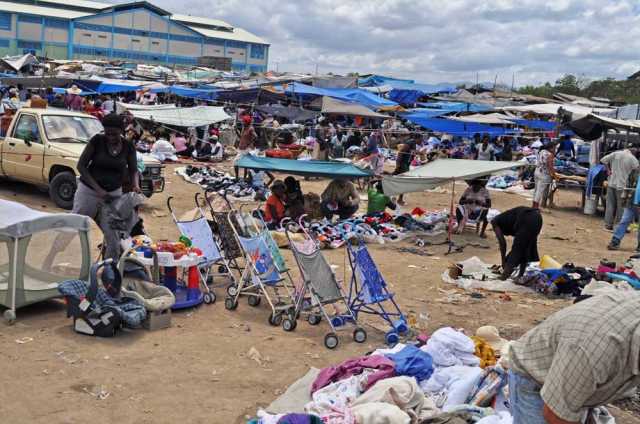
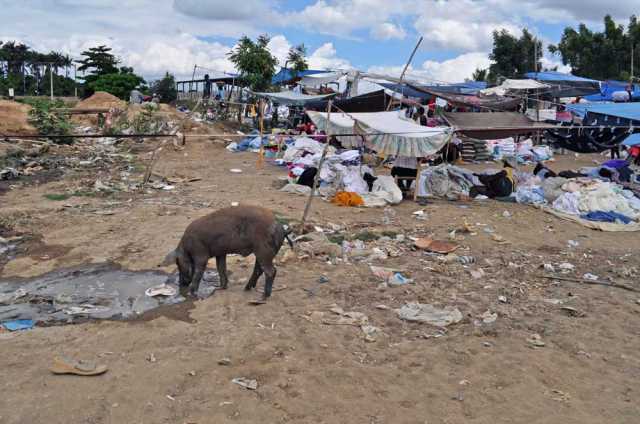
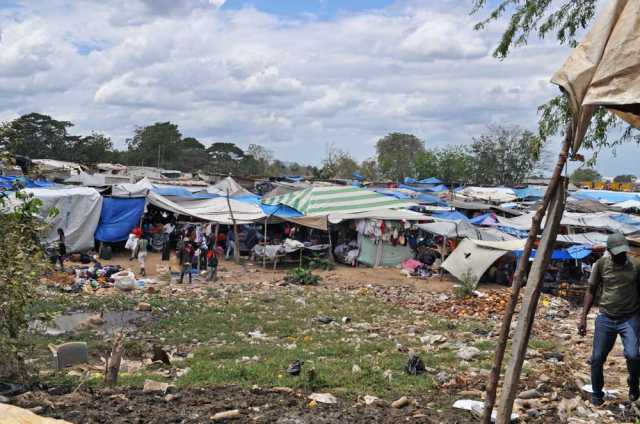
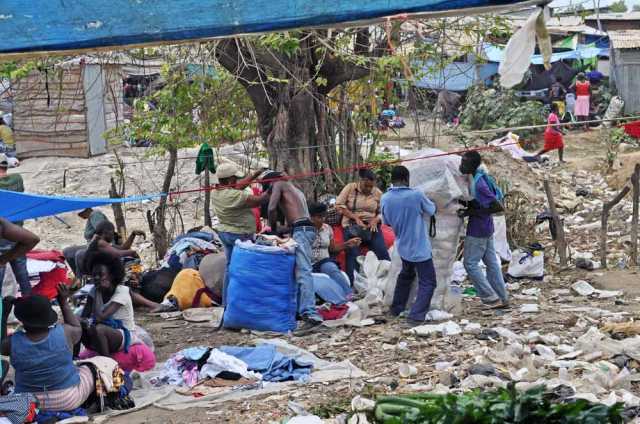
spreading into adjoining wood land
Trade along the perimeter of the new market hall
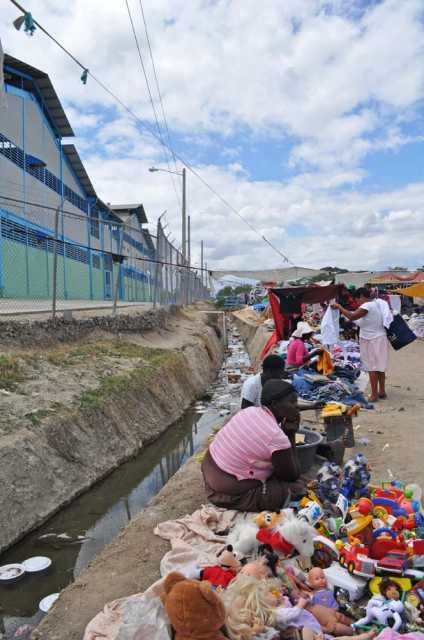
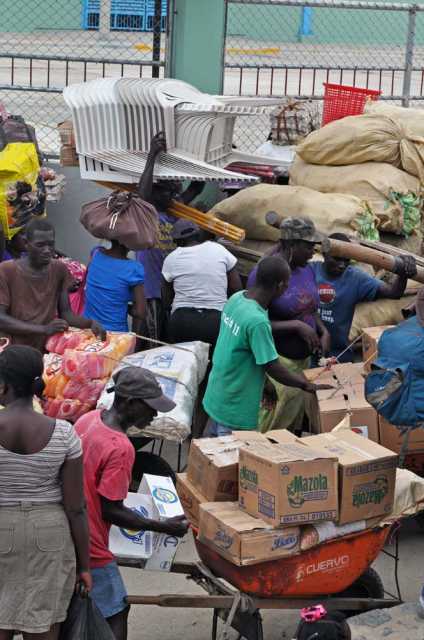
Informal market infrastructure
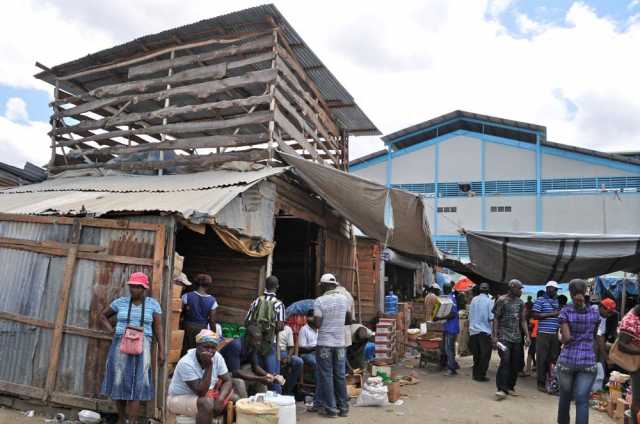
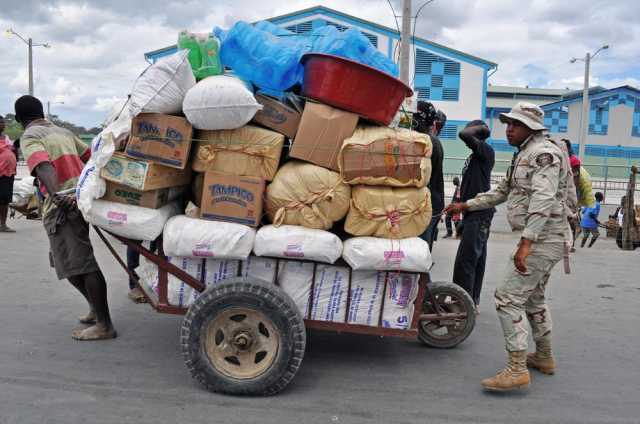
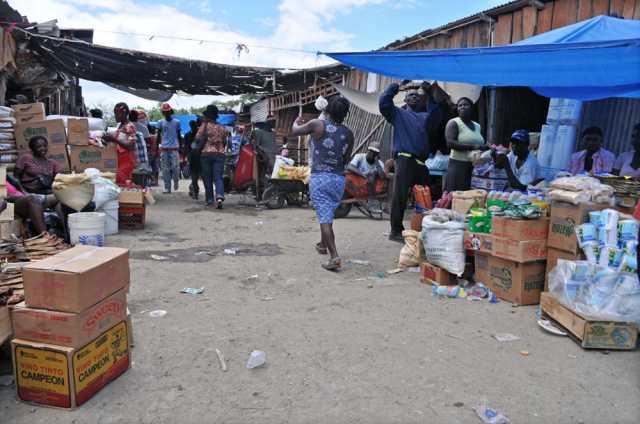
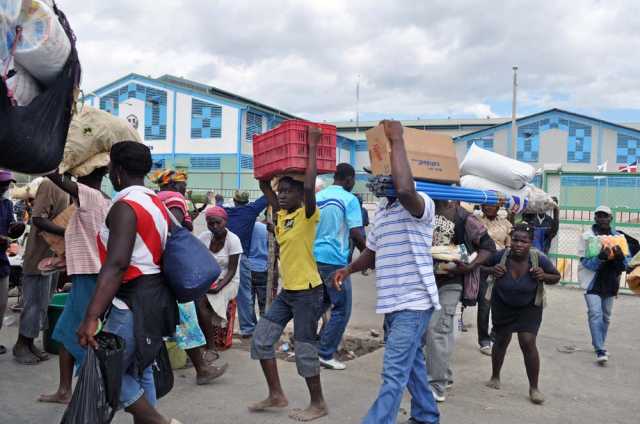
Goods are carried across the new bridge into Haiti
Approach to the new border crossing
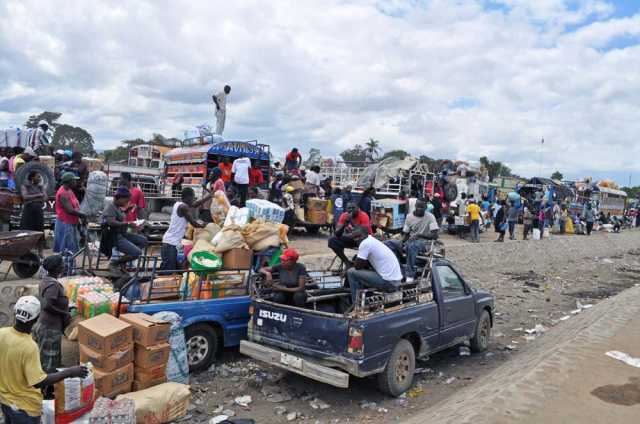
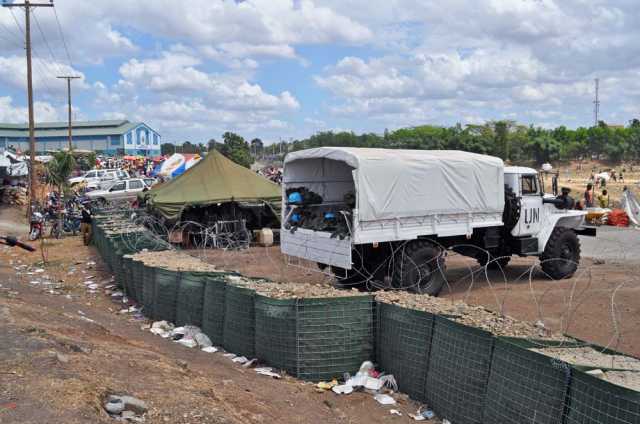
International compound next to the market
On the banks of the Massacre river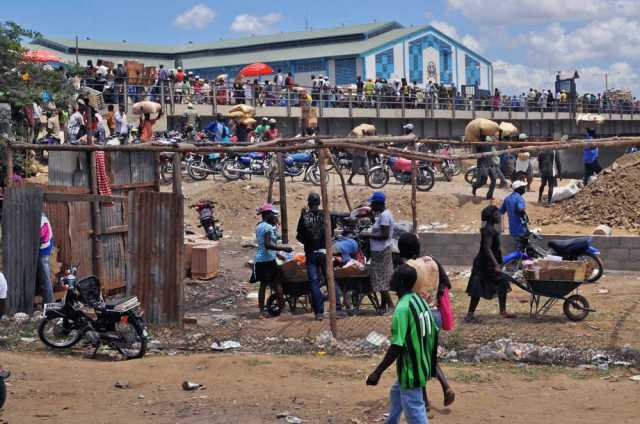
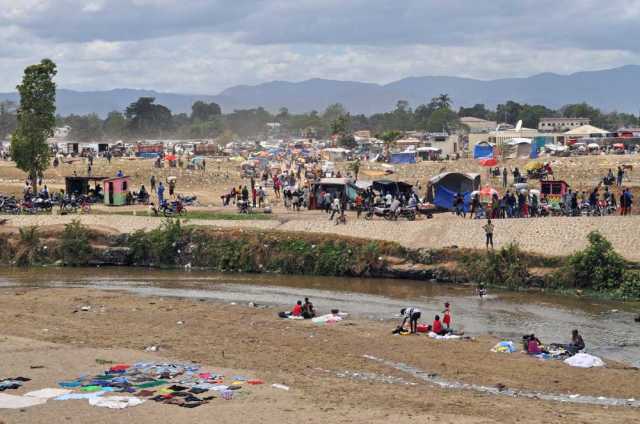
toward Ouanaminthe, Haiti


returning with goods from the informal market at the back of the building
Until the cholera scare of 2010 the ‘international fair’ in Dajabón occupied the streets of the town spreading across nine blocks of the centre


The market has now been moved to the new border crossing with vendors initially setting up stall on the fields at the back of the new market hall
Market at the back of the new market hall




spreading into adjoining wood land
Trade along the perimeter of the new market hall


Informal market infrastructure




Goods are carried across the new bridge into Haiti
Approach to the new border crossing


International compound next to the market
On the banks of the Massacre river


toward Ouanaminthe, Haiti
Dajabón market
International aid
Initially, the market in Dajabón took place right in the city centre spreading across nine blocks with informal trade also emerging along the Haitian approach to the border bridge. In 2005 the United Nations Development Programme and the European Union decided to fund a new market building comprising 2.264 internal and external vendor modules, a customs house and a new bridge across the Massacre River. In 2010, following a major earthquake in Haiti and the subsequent onset of a cholera epidemic, the existing street market was pushed to the area of the then still unfinished new market building. Market activities spread out along the back of the market building into fields and wood land, many of which have remained there in the open even after the opening of the new market hall.
The main activities at the border are commercial and for many of the Haitians and Dominicans living along the border these trade operations represent the main form of income. Tens of thousands of products enter and exit through its various points, with the most distinctive quality of this form of commerce being its transactional character. An impressive amount of capital (in the form of goods and labour) passes through the region but doesn’t get accumulated in it. Those who engage in the exchanges can only survive through the commerce but they do not get involved in long-term development projects.
To no small extent, the character of the border is affected by the intervention of multiple agents that operate from a global context as well as from a bi-national one (that is from the Dominican Republic and/or Haiti). The border thus becomes a series of sites with a strong multinational character, comprising the interests and struggles of various institutional and economic entities as well as a multiplicity of social groups.
Melisa Vargas
Santo Domingo
Studies
A massive open market exists underneath the Superhighway between Shenzhen and Guangzhou
read more...
read more...
Elastic borders at the Dominican ‘International Fairs’
read more...
read more...
in the Tri-Border Area of Paraguay, Brazil and Argentina
read more...
read more...
Occupying the derelict remains of a once popular resort area on the fringes of Buenos Aires
read more...
read more...
The body as a commercial vehicle
Case studies from Lima, Peru and Tijuana, México
read more...
read more...
Rom-Hoob market runs about 500 meters along both sides of the Mae Klong railway in Samut Songkhram.
read more...
read more...
A container market located outside of Odessa, at the ‘7th Kilometre’, claims to be the largest market in Europe.
read more...
read more...
as a liberated archive
read more...
read more...
Vietnamese markets sprawl on former no-man's-land along the Iron Curtain
read more...
read more...
In the border town of Tijuana more than 300 street markets provide a much needed common sphere
read more...
read more...
Four Tigers Market is a major node of the East Asian migrant community in Budapest.
read more...
read more...
A game of masquerades, Moscow's Cherkizovsky market occupies a 1980s Olympics site.
read more...
read more...
At Arizona Market in Bosnia and Herzegovina informal urbanisation intersects with post-war peacekeeping.
read more...
read more...
High-contrast developments take place just outside Istanbul's Byzantine city walls.
read more...
read more...